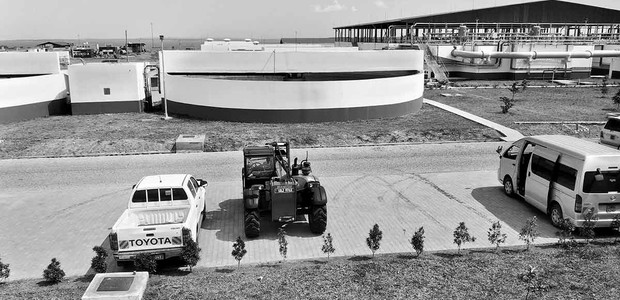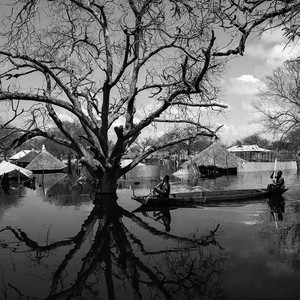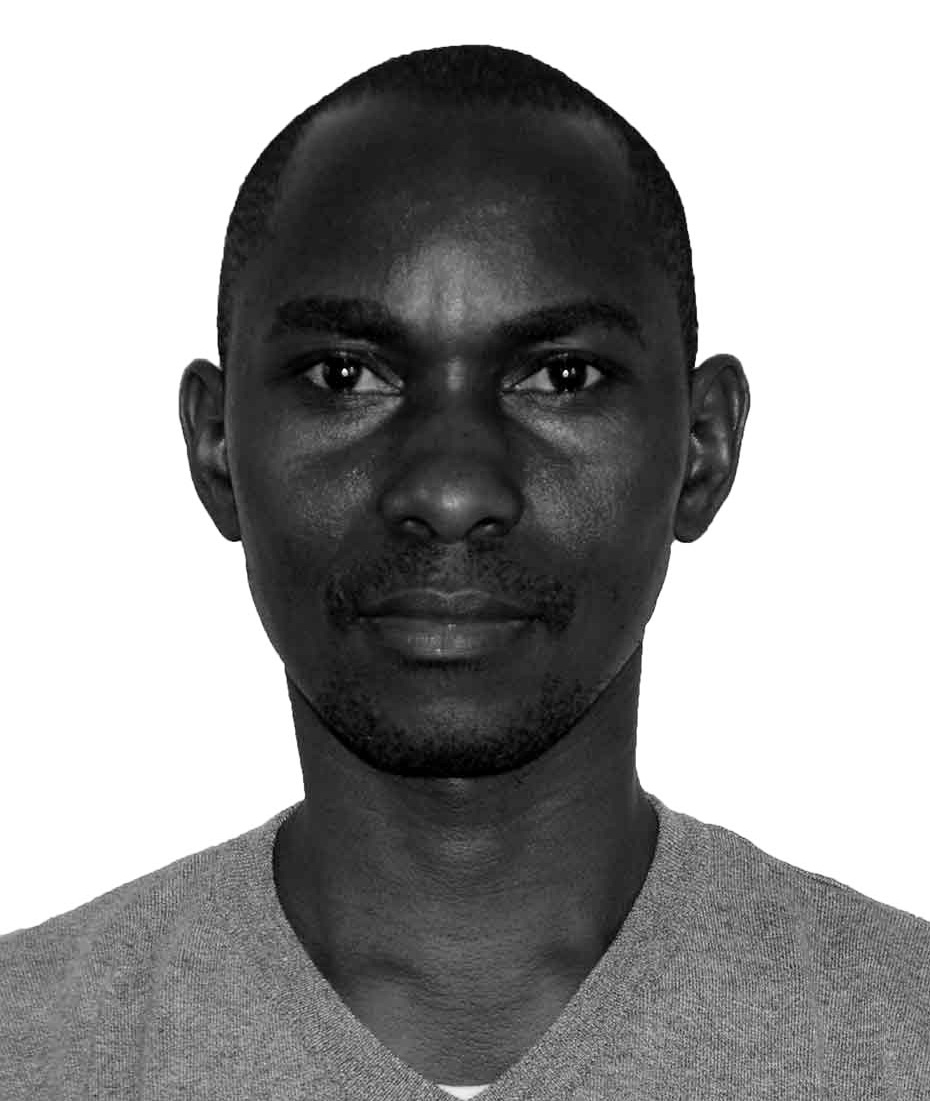re‹think the way we live & workRethinking water security

On July 5, 2021, Sogea-Satom, a French firm, which has been building a brand new water treatment plant over the last 30 months, handed it over to the National Water and Sewerage Corporation (NWSC) – Uganda’s water utility company.
Sprawled on 25 acres near the shores of Lake Victoria in a quiet village, 50 kilometres east of Kampala, the Katosi water treatment plant is now pumping about 160 million litres of water per day. When added to the 240 million litres that the old plant at Ggaba was already pumping daily, Kampala’s daily water supply has suddenly shot up to 400 million litres.
Senior government officials told The Niles during a recent visit to the plant that rapid urbanisation and industrial activities have attracted millions of people to Kampala city and its surrounding districts.
Funded by the European Union Africa Infrastructure Trust Fund, the European Investment Bank, the Agence Française de Development (AFD) and Kreditanstalt für Wiederaufbau (KfW) at the cost of EUR 82.2 million, the Katosi Drinking Water Treatment Plant and Katosi-Kampala Transmission Main Project are part of the more comprehensive KW-LCWATSAN Project, whose objective is to improve living conditions of the residents in the Greater Kampala Metropolitan area through the provision of safe and reliable water.
The proposal to build the Katosi plant was mooted at the beginning of the millennium when it was discovered that the deteriorating water quality in the Inner Murchison Bay at Ggaba posed a significant challenge to the National Water and Sewerage Corporation’s task of supplying water at a cheaper cost. The eastern suburbs of the metropolis were suffering from an intermittent water supply. Now that challenge has suddenly evaporated.
We urgently need to change the way we do things.”
“The project was like a dream that has now come true. With it, we are going to resolve all the water supply challenges in Kampala city,” Eng. Badru Kiggundu, the Board Chairman of the NWSC, said.
“With the additional water from Katosi, the combined water production from Ggaba and Katosi will help us address all ‘dry zones’ in the city,” added Eng. Silver Mugisha, the head of the NWSC.
“We have excess capacity. We lack enough distribution systems to make sure that everybody gets water. NWSC engineers have embarked on laying distribution mains to send the water to the entire Kampala Metropolitan area,” he added.
Like many big cities and towns in upstream countries of the Nile Basin, Kampala sits on the northern shores of Lake Victoria. According to UN-Habitat, the city has expanded from 189 to a sprawling metropolis of about 1,000 square kilometres and hosts a day population of about 3.5 million people.
Mugisha said the current water supply is sufficient to meet the Greater Kampala Metropolitan Area needs over the next 10-15 years. But with the ever-growing population of Kampala city, which also serves as Uganda’s commercial and industrial hub, it remains to be seen whether this will remain the case.
For many urban planners in all Nile Basin countries, the population explosion is a big challenge for residents. As of September 1, the real-time global data tracking website, Worldmeter, puts Ethiopia’s current population at 118 million, making it the most populous country among the 11 Nile Basin countries.
Ethiopia is followed by Egypt (104.5 million), DR Congo (93 million), Tanzania (60 million), Kenya (53.7 million), Uganda (45.7 million), Sudan (45 million). Rwanda (13.3 million), Burundi (12.2 million), South Sudan (11 million) and Eritrea (3.6 million).
Many of the people in these countries live within the Nile Basin, with Egypt leading at (85.5 million), followed by Ethiopia (37.6 million), Uganda (33.6 million), and Sudan (31.4 million). Eritrea (2.2 million) and DR Congo (2.9 million) have the smallest populations within the Nile Basin.
Even more worrisome is the prediction that the urban population in these countries will shoot up in the coming decades. By 2050, the urban population is expected to reach above 50 percent of the total population in four Nile Basin riparian states. In seven countries, the urban population will make up more than 40 percent of the total population. According to the Nile Basin Water Resources Atlas, the rural population is expected to shrink in all countries rapidly.
Several experts The Niles has spoken to say the complexity of the large number of countries sharing the Nile Basin, combined with the uneven distribution of the water resources among these countries, population pressure and urbanisation, pose significant challenges for the sustainable management and development of the shared resource.
Henry Bazira, the Executive Director of the Water Governance Institute, a Kampala-based non-profit, told The Niles that the rapid population growth in all countries is putting a lot of stress on the Nile waters.
Dr. Callist Tindimugaya, the Commissioner for Water Resources Planning and Regulations in Uganda’s Ministry of Water and Environment, added that rising populations in countries like Uganda, Burundi, Rwanda, Kenya and Tanzania makes it harder to cover people’s basic needs.
“Take, for example, the issue of food. For a long time, the upstream Nile Basin countries have been depending on rain-fed agriculture to grow food, but climate change means they cannot depend on rainfall anymore. You now need irrigation,” he said.
In addition, water was already in high demand for people’s everyday needs at home and for industrial uses. “That is why we are saying we urgently need to change the way we do things,” he told The Niles. “Without having a rethink, conflicts will escalate.”
Climate change could intensify such conflict. Ethan Coffel and Justin Mankin have written about the potential risk that water scarcity in the Nile Basin poses over the coming decades.
In their paper entitled “Future Hot and Dry Years Worsen Nile Basin Water Scarcity despite Projected Precipitation Increases”, Mankin, an Assistant Professor at Dartmouth College and Coffel, a Neukom Institute Postdoctoral Fellow at the same college, noted that although there is going to be more rain in the upstream countries, there will be less water in the Nile.
That sounds like bad news for over 250 million people who are directly reliant on the Nile waters in Ethiopia, Uganda, South Sudan, Sudan and Egypt. At the moment, around 10 percent of the basin’s population faces chronic water scarcity due to the region’s seasonal aridity and the highly unequal distribution of water resources.
By 2040, the researchers say a hot and dry year could imply water scarcity for 45 percent of people in the Nile Basin – nearly 110 million people. But even without these developments, the researchers say, population growth would drive water scarcity in the upper Nile. But more significant deficits in the amount of water into streams and rivers during future hot and dry years will amplify this effect.
The researchers’ findings agree with the 2020 Nile Basin Initiative (NBI) corporate report, which notes that water availability per capita in the Nile Basin declines. The report says the Nile Basin countries need to explore new water and use less water more efficiently.
Rethinking the Nile Basin’s water security
The reality of the ever-dwindling water volumes in the Nile is becoming more real every passing day. Many experts are exploring several ways of sharing the available water in the Nile, among other avenues.
Egypt, a country that suffers perennial water deficits, has explored the desalination of the Red Sea and the Mediterranean Seawater. Another audacious alternative recently suggested is to re-channel about 95 billion cubic metres of freshwater from the Congo River to the Nile Basin.
Meanwhile, the NBI says it is embarking on several projects and activities to increase storage capacity.
For instance, it supports the improvement of water use efficiency in major water-use sectors, strengthening river basin monitoring and data analysis. It also promotes conjunctive use of surface and groundwater resources and improves the preparedness for flood and drought risks in the Nile sub-basins.
“There are huge information gaps in the basin, which need to be plugged urgently to improve the basis for decision-making on critical water resource management issues,” says Mwasiti Ally Rashid, Programme Officer for Water Resources Management & Development, NBI Nile Equatorial Lakes Subsidiary Programme Coordination Unit (NELSAP-CU).
Following the conclusion of the first phase of the study on strategic water resources assessment in 2017, the second phase of the study, which started in 2018, focused on updating the baseline condition from the first phase, developing refined projections of water demands for the years 2030 and 2050 and carrying out a detailed study of the options identified in the first phase.
The strategic options include water-saving and other measures for enhancing water supply, including desalination and reuse of drainage water from irrigation and municipal uses. The options are of strategic importance in ensuring that the growing demand for water in the Nile Basin is addressed more sustainably.
Another groundbreaking project in the works is the Nile Basin Regional Hydromet project, which will inform national planning and evidence-based decision making by enabling Burundi, DR Congo, Ethiopia, Kenya, Rwanda, South Sudan, Sudan, Tanzania and Uganda to share reliable data and knowledge for better monitoring of the Nile’s water resources.
“Water resources data and information are needed to ensure that investment planning is well-informed. Through the Nile Regional Hydromet System, the countries will put in place real-time information and data sharing protocols, mechanisms, and agreements, as well as data processing and analytical models and toolkits to be used for strategic water resources analysis for identification of sustainable development and feasible investments,” said Rashid.
A recent USD 5.3 million groundwater project commenced in June 2020 and aims to improve the understanding of available groundwater resources and demonstrate how to optimise surface and groundwater joint use.
A study on groundwater availability in the Eastern Nile Basin has already been completed to make a preliminary assessment of groundwater resources (mapping, recharge and safe yield) and the potential use of groundwater for irrigation and domestic use.
The five-year project funded by the Global Environment Facility (GEF) covers three shared aquifers involving seven NBI countries, including those which share the Kagera aquifer (Burundi, Rwanda and Tanzania); Mt. Elgon aquifer (Kenya and Uganda) and the Gedaref-Adigrat aquifer shared by Ethiopia and Sudan.
Cooperation will be crucial in the future with millions of more people and less water in the Nile Basin. Dr. Solomon Asiimwe, a senior lecturer of governance at Uganda Martyrs University, told The Niles that the Nile River is the lifeblood for all countries that share it. For Egypt and Sudan, the reality is even more glaring. Asiimwe said that there is no alternative other than cooperation for all the countries that make up the Nile Basin.
Mekdelawit Messay Deribe, an Ethiopian civil engineer and environmental scientist currently a PhD student at Florida International University’s Institute of Environment, said the focus is on catering to existing needs without denting the needs and rights of others is upon all the Nile Basin countries.
In her article, “The Grand Nile Basin Renaissance Plan”, which appeared in the June 2020 issue of Ethiopia Insight, she noted that it is high time Nile Basin countries explored the concept of water trade. She said by pricing water on a regional basis, the Nile Basin could have countries with water surplus sell their excess to those countries in need.
“This can be seen in the current situation of Sudan and Egypt. While Egypt uses more than its “allocated share” of 55.5 billion cubic metres, Sudan does not use its share of 18.5 billion cubic metres, and the unused water goes to supplement Egypt.”
We lose a staggering amount of water.”
She added that the Nile Basin countries need to foster a basin-wide integrated use approach to maximise individual benefits. Hence, many water-related investments in the Nile basin are not water “smart.”
“We lose a staggering amount of water because of choices which are not water-smart, such as growing water-intensive crops or building a large reservoir in the desert. Such projects result in immense losses because they are not water-smart decisions and only serve narrow national agendas.”
Deribe added that the current water use in the Nile Basin is highly inefficient. Seepage from watercourses and dams is significant, especially in Egypt and Sudan, where open irrigation canals are common.
“By investing in increasing the efficiency and reducing waste, we save so much water which can be used for other purposes,” she says. “Concerned environmental conservation endeavours by all riparian countries – to increase the water stored in the basin and to reduce pollution and enhance the ecosystem – is necessary for sustainable use.”
For Deribe, the Nile Basin countries must also foster water-conscious populations that understand the water’s value and use the resource judiciously. This should start with all the Nile Basin children, she said.


